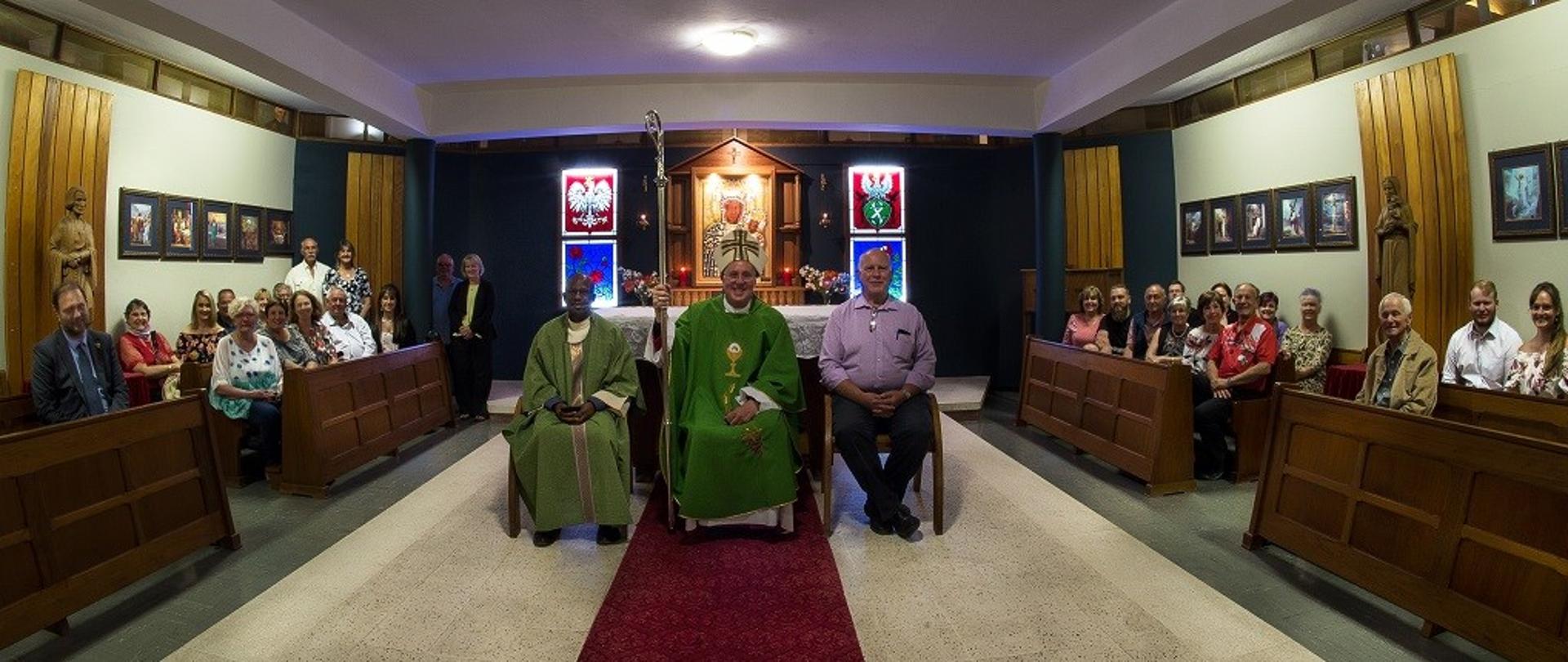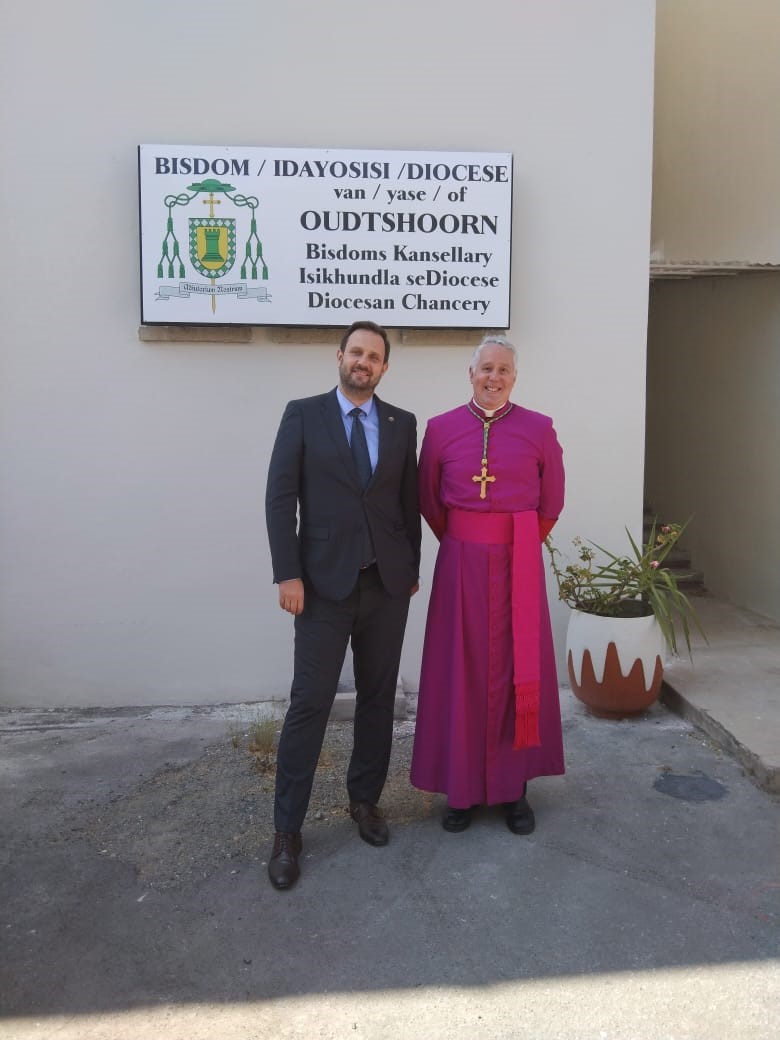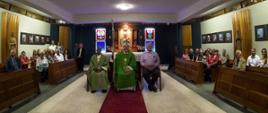Unveiling of the commemorative stained glass windows in the cathedral in Oudtshoorn
26.09.2021
A momentous celebration took place on Sunday, September 26, 2021 at the Black Madonna Chapel in the Cathedral of Oudtshoorn (South Africa). Bishop Noel Rucastle, President of the Polish Association of Siberian Deportees in Africa, Stefan Szewczuk and the Consul of the Republic of Poland, Michał Gierwatowski, officially unveiled the commemorative stained glass windows that were funded as part of the Polish-South African historical project.

The aim of the project is to search for and capture historical ties between the Polish and South African nations. The unveiled stained glass windows commemorate the history of Polish children who, at the invitation of the Prime Minister of the South African Union (now South Africa), Field Marshal Jan Smuts, found help and a safe haven in Oudtshoorn during World War II. One of the Oudtshoorn’s children, Felix Vaskys, was among the gathered guests.
The whole world witnessed the tragedy of the events of World War II and the tragic history of about 1.7 million Poles deported from their family homes to Eastern Siberia. A large proportion of these people were orphaned children who were forced to look for a new home. In April 1943, after a difficult and long sea voyage, a group of 500 of them reached the shores of the South African Union, where they were warmly welcomed by the local population. A camp was established in Oudtshoorn, in which 500 children and about 60 caregivers created their "little Poland". Polish children who arrived at the camp and decided to stay in the Union of South Africa after its closure in 1947, actively contributed to the building of this country, had an impact on social life and its development in every aspect. They are the foundations of the Polish community in South Africa, which we estimate today at 10,000-15,000 citizens. The Oudtshoorn’s children have left behind a legacy, the commemoration of which is our common good and duty.
In the cathedral in Oudtshoorn one can see the icon of the Black Madonna (a copy of the painting "Black Madonna") painted in 1993 by one of the Oudtshoorn’s children, the late Stefan Adamski. On the other hand, in the local museum "CP Nel Museum", the time of the camp is commemorated by the Polish section with photos and documents from that period.
The Embassy of the Republic of Poland in Pretoria and the Polish Association of Siberian Deportees in Africa are planning to fund a monument commemorating the history of a group of 500 Polish Oudtshoorn’s orphans, who survived the deportation to Siberia and then went a long way in searching for a new, safe home.
The unveiling ceremony was recorded and the video is available on the following site: https://youtu.be/S-sIx7K1qgg; https://www.youtube.com/watch?v=S-sIx7K1qgg
We would like to draw your attention to the British Pathe newsreel on the Oudtshoorn Children. This newsreel can be viewed in the following link:
https://samilhistory.com/2017/09/14/south-africa-provides-sanctuary-for-polish-refugee-children-during-ww2/
On the website of the diocese of Oudtshoorn, you can also view the record of the Holy Mass that accompanied the ceremony:
https://www.facebook.com/The-Diocese-of-Oudtshoorn-108130457648557
Photos: Witold Jakutowicz and Michał Gierwatowski



